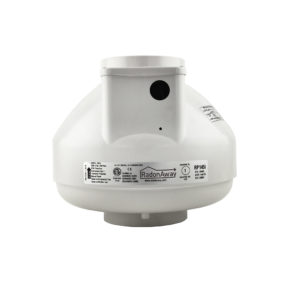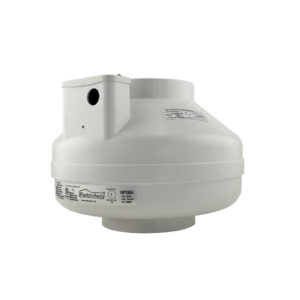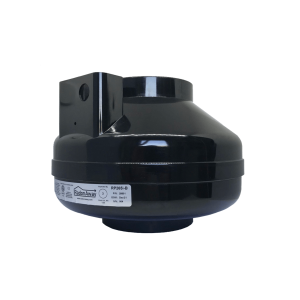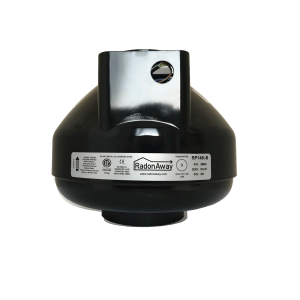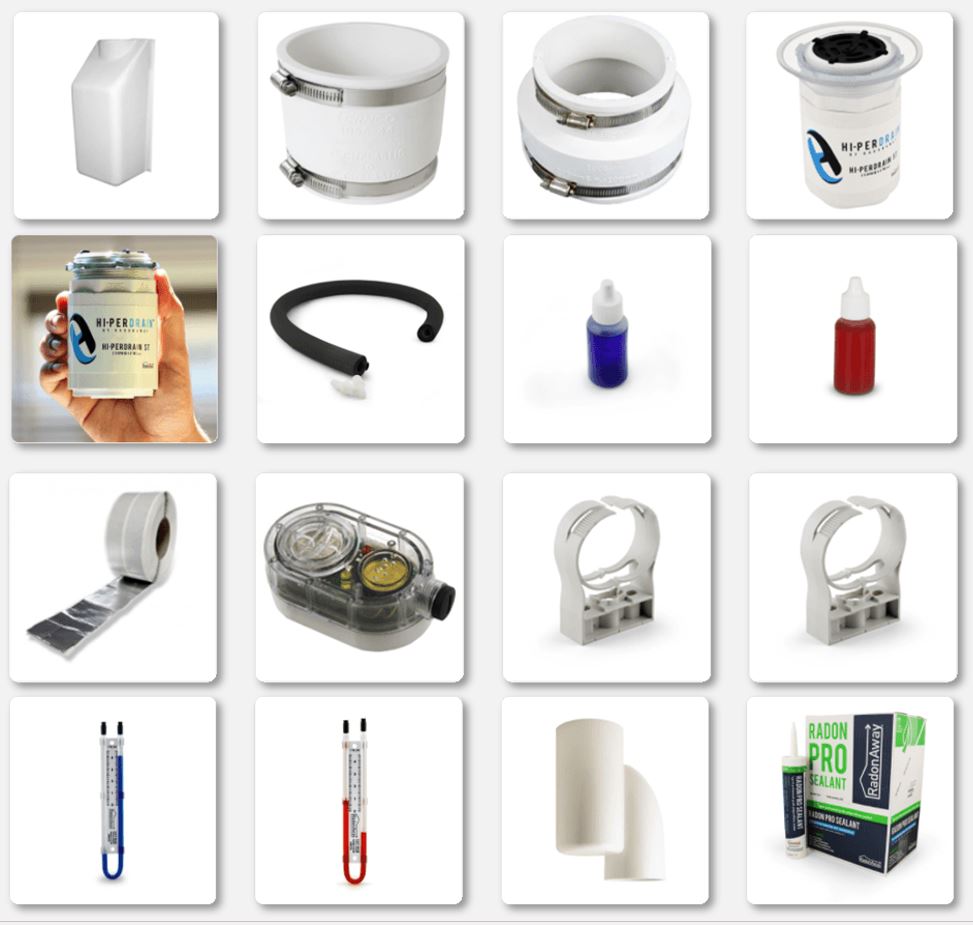-

RadonAway RP145i Radon Fan Pro Series – White
Rated 5.00 out of 5199,00€ Inc. VAT: 242,78€ Sold By : Niton Srl
Add to cart - Sale!

RadonAway RP265i Radon Fan Pro Series – White
299,00€249,00€ Inc. VAT: 303,78€ Sold By : Niton Srl
Add to cart -

RadonAway RP265i Radon Fan Pro Series – Black
299,00€ Inc. VAT: 364,78€ Sold By : Niton Srl
Add to cart -

RadonAway RP145i Radon Fan Pro Series – Black
199,00€ Inc. VAT: 242,78€ Sold By : Niton Srl
Add to cart
Reza Hosseini, PhD - Managing Director at RadonMarket, R&D Manager & NRPP MFM Certified Radon Professional at Niton srl
Until now, we have always talked about continuous Radon monitors or so-called CRM (Continuous Radon Monitor). In this number of RadonMarket Mag we would like to start a new series of reviews on the Radon Mitigation tools. Of course, we will continue to know more about CRM and other measuring instruments in the future, so continue to follow us on the main page of RadonMarket Mag.
We start with the heart of any classical Radon mitigation system, which is the Radon Fan.
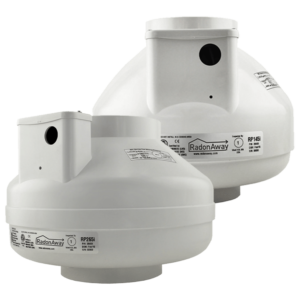
RADONAWAY
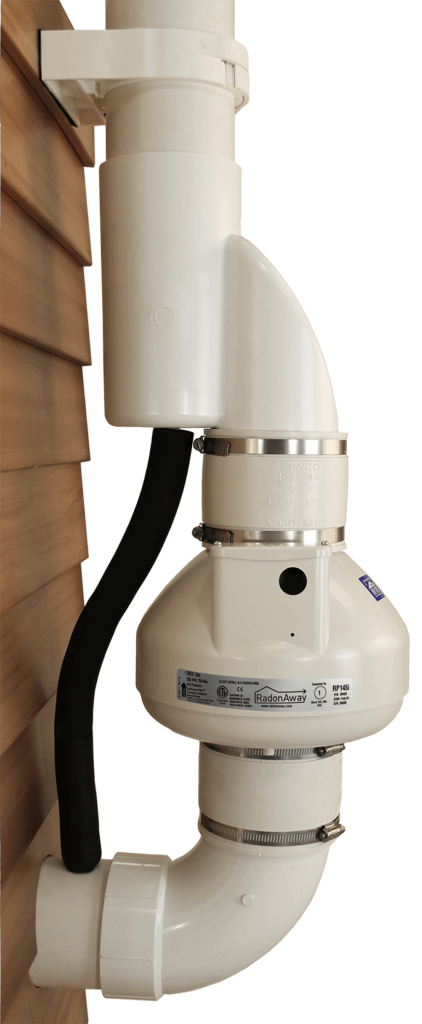
First, we need some technical background on Radon mitigation approaches to know why we need a Radon Fan.
The Sub Slab Depressurization (SSD) is the most common method to perform a Radon mitigation project. In this approach, the air pressure in the ground beneath the building is kept lower than the indoor air pressure. As a result, higher indoor pressure pushes the Radon laden air down and does not let it come up from the ground inside the building.
Even though a very small pressure difference is enough to achieve this goal, a passive system is not sufficient in many cases. Plus, the passive SSD system is usually installed in new buildings, and many old buildings are not equipped with that.
In an active SSD system, a fan continuously sucks the air from the ground to decrease the ground pressure. Therefore the central part of any active SSD system would be the Radon fan. In short, the Radon fan is responsible for continuously sucking the ground air in order to keep the ground pressure under the building always lower than the indoor pressure.
This section does not aim to discuss Radon mitigation methods. Therefore, we stop here our discussion on the SSD system and go forward to know more about Radon Fans. However, if you would like to learn more about SSD or other mitigation systems, follow the RadonMarket Mag here or visit the RadonMarketAcademy.com, in which new materials be available frequently.
Knowing the importance of a Radon fan, we should also know which fan is suitable for an active SSD system. Here are the questions:
1- Could we consider any type of fan as a Radon fan?
2- Which Radon fan is proper for your Radon mitigation project?
Answering the first question is easy. The Radon fans should be specifically designed for Radon mitigation. There are many factors to be considered when using a fan for a Mitigation project.
The fan should provide high airflow, energy efficiency, quiet operation, and effective Radon reduction. It also needs enough vacuum when dirt under the slab is packed with likely low system airflow.
The air from the ground brings humidity inside the fan motor. If you put the Radon fans outside, its housing could stay directly under the sun for a long time. If you put the fan inside the building, the housing should be appropriately sealed. The last thing you want is a leak in the housing of your Radon fan.
Regardless of the climate or soil conditions, Radon fans usually work constantly without turning off, which could be some years. A Radon fan should be ready for all these situations to guarantee a good quality mitigation system.
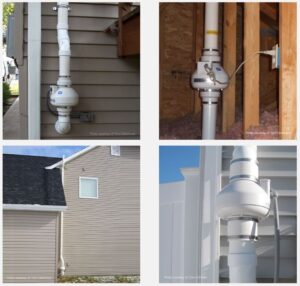
Fortunately, there are Radon fan producers who have a long history dealing with all these issues. They have identified possible problems that a Radon fan encounter during its lifetime and upgraded their Radon fans' to overcome them. One of these producers is RadonAway.
For over 30 years ago, RadonAway introduced to the Radon industry the first radon-specific fan. Their first radon mitigation fan was installed in 1990. Since then, their fans have become the most popular, reliable, and effective Radon fans in the world. Niton srl is the exclusive distributor of RadonAway fans in Italy.
Now lets, see which Radon fan is suitable for your Radon mitigation project. This time the answer is not easy. Practically there is no best fan, but there can be the best fan for your situation. Generally, fans can be broken into four categories:
- Low Wattage Fans - good sub-slab gravel and slab sealing.
- Mid Range Fans - less than optimal sub-slab aggregate and/or slab leakage
- High Flow Fans - Lots of slab leaks or very porous soil or multiple foundations to treat
- High Vacuum Fans - Packed dirt under the slab with likely low system airflow.
If you are interested to see a full comparison between the Radon fans, you may read more here.
However, to have a more straightforward approach to find a proper Radon fan and not have tens of options to choose from. Here we can recommend two Radon fans from the RadonAway, which are ideal for most sub-slab Radon mitigation systems, the RP145i and RP 265i.
RP145i and RP 265i Radon fans:
Both RP145i and RP 265i are from the RadonAway Pro series. The Pro Series Radon fans are the culmination of years of research and field testing by RadonAway engineers, working with advanced plastics experts. The challenge was to produce a durable, fire-retardant engineered plastic housing to meet the demands of the Radon application and the RadonAway stringent quality requirements. The result is a specially formulated plastic, making the Pro Series Stay-White fans™, unlike any other Radon fans. Pro Series fans will stand up to exposure to the outdoor elements over time and do not contain potentially harmful materials such as fiberglass.
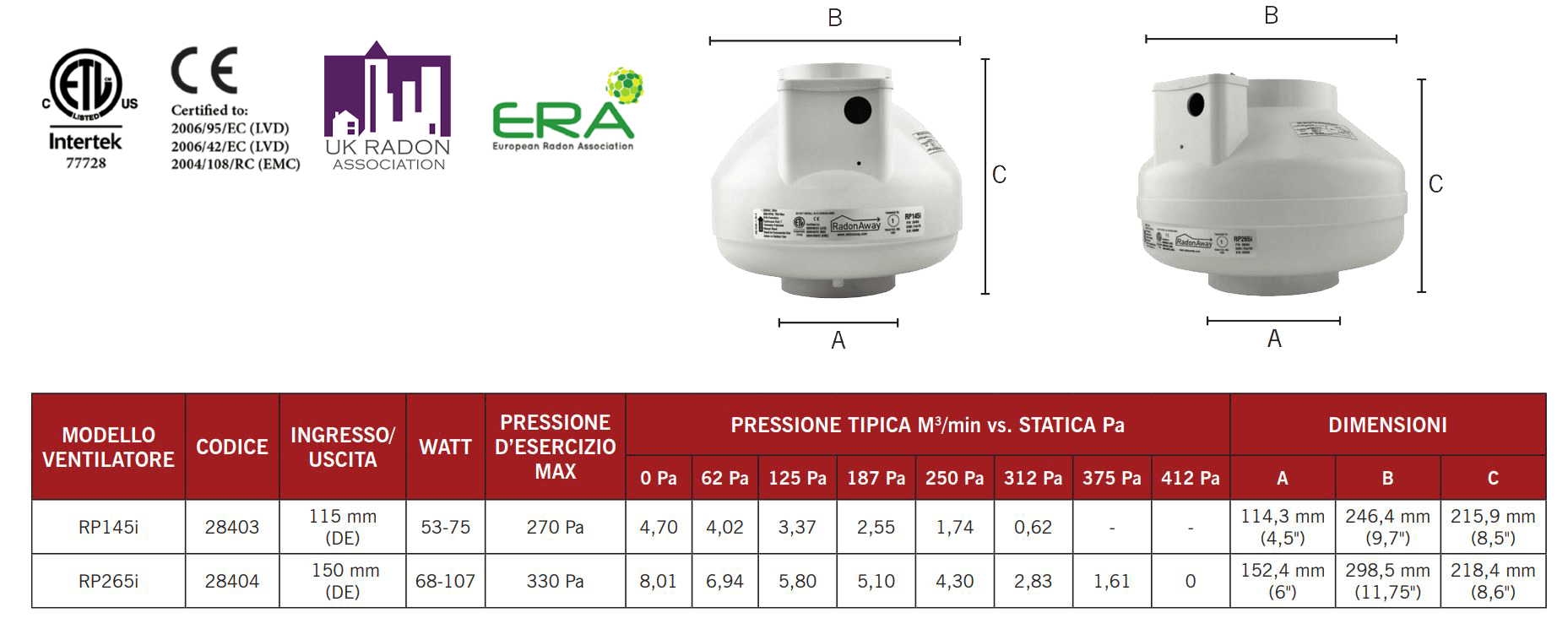
Caratteristiche:
+ Alloggiamento Stay-White™ (il bianco rimane vivo anche se esposto al sole)
+ Efficienza energetica elevata
+ Funzionamento super silenzioso
+ Piena conformità alle normative elettriche
+ Girante motorizzato temprato in acqua
+ Giunture sigillate per impedire anche piccole le perdite di radon (tenuta double snap RP145i)
+ Certificazione ETL: per uso interno o esterno
+ Motore termicamente protetto
+ Per uso commerciale e residenziale
+ 230VAC, 50-60Hz, 2500RPM, 80W Max
Accessories:
In addition to Radon fans, RadonAway offers a wide array of products ranging from sump pumps & accessories to pipe accessories.
All the accessories are made and compatible with RadoAways RP145i and RP265i fans. You can find all the accessories for performing a Radon mitigation project on the RadonMarket website.
Reza Hosseini, PhD - Managing Director at RadonMarket, R&D Manager & NRPP MFM Certified Radon Professional at Niton srl
The interest in indoor air quality has been increased in recent years. In many cases, the indoor air quality could be improved by improving the current air exchange rate. Mechanical ventilation systems such as Heat Recovery Ventilators (HRV) can increase the house's current natural ventilation rate besides saving energy. HRV is a system that uses the heat in the stale exhaust air to preheat incoming fresh air. This technique reduces the energy required to bring outside air up to ambient room temperature; therefore, it saves money on heating bills. Typical efficiencies range of HRVs are from 55% to 75%, but some highly efficient models are rated as high as 93% efficiency.
In this number of RadonMarket Mag we will examine the effect of HRVs on the indoor Radon concentration. In specific, we will see how to calculate the volume of air needed from an HRV system to reduce Radon concentration to a certain level and eventually choose a correct HRV size.

Before start, we need to know what the Air Changes per Hour or ACH is. The ACH is a dimensionless term used to quantify the amount of air exchanged naturally or with the help of a mechanical ventilator. To calculate the ACH, the volume of air exchanged per hour is divided by the volume of the house:
 For example, if 75 cubic meters of air enters and leaves a building every hour (75 m3/h) and the building has an interior volume of 250 cubic meters (80 square meter building with 3-meter ceilings), the Air Exchange rate is:
For example, if 75 cubic meters of air enters and leaves a building every hour (75 m3/h) and the building has an interior volume of 250 cubic meters (80 square meter building with 3-meter ceilings), the Air Exchange rate is:
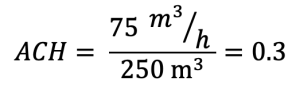 Apart from northern Europe, the dominating European ventilation system is natural ventilation. Therefore in our calculations, we will use the natural ACH or ACHn. Every home has a certain amount of ACHn, e.i. a certain amount of outdoor air is exchanged naturally with indoor air. This means that "Every home leak."
Apart from northern Europe, the dominating European ventilation system is natural ventilation. Therefore in our calculations, we will use the natural ACH or ACHn. Every home has a certain amount of ACHn, e.i. a certain amount of outdoor air is exchanged naturally with indoor air. This means that "Every home leak."
The ACHn of homes is usually less than 1 (typically between 0.1 to 0.3). As with the recent energy codes, newer homes are so much tighter, so it is fair to consider a greater ACHn for older homes than newer ones. However, "Energy-efficient homes do not cause the Radon problem!" In fact, new homes might be equipped with more efficient HRV systems, or even in some new constructions, a passive Radon mitigation system is already installed.
Knowing the HRV and ACHn, we are ready to talk about reducing the Radon level using Heat Recovery Ventilators. The first step is to measure the current Radon concentration of the house. We assume that the Radon level is consistent throughout the entire house, even if the measurement was performed at the lowest level. This is a conservative assumption which also simplify our calculations.
Next, we need to know the ACHn. Rather than measuring the volume of air changed under normal conditions, it is possible to use the results of a standard blower door test in which 50 pascals of pressure are applied (ACH50). Another way is making an assumption. This assumption could be based on the house's tightness, age, and actual conditions or in a more conservative manner based on the minimum standards values.
The table below summarises the standards/regulations related to the whole building ventilation rates in some European countries.
| Country | Whole building ventilation rates | Standard/Regulation Ref. |
| Czech Rep. | 0.5 vol./h | CSN 73 4301 Residential Buildings, CSN 73 0540 Thermal protection of Buildings |
| Denmark | 0.5 /h | DS 418:2002 |
| Finland | > 0.4 /h General rule: Outdoor air flow should be at least 0.35 l/s.m2 (1.26 m3/h.m2). | NBC e D2 |
| France | Min airflow for dwellings, according to the number of habitable rooms (R). 1 R: 105 m3/h 2 R: 120 m3/h 3 R: 150 m3/h 4 R: 165 m3/h 5 R: 210 m3/h 6 R: 210 m3/h 7 R: 210 m3/h | Arreté du 24.3.82 |
| Germany | <50 m2 up to 2 occupants: Nat. vent: 60 m3/h Mech. vent: 60 m3/h 50-80 m2 up to 4 occupants: Nat. vent: 90 m3/h Mech. vent: 120 m3/h >80 m2 up to 6 occupants: Nat. vent: 120 m3/h Mech. vent: 180 m3/h | DIN 1946 Part 6, DIN 18017, |
| Greece | Detached houses, Estimated 5 persons/100 m2 of floor area. Block of Flats, Estimated 7 persons/100 m2 of floor area. | Greek Legislative Framework Document |
| Italy | Per gli edifici residenziali si assume un tasso di ricambio d'aria pari a 0,3 vol/h | UNI/TS 11300-1 |
| Netherlands | 300 m3/h | Building Decree |
| Norway | Not less than 0.5 /h | Norwegian Building Code |
| Sweden | Requirements: Rooms shall have continuous 0.35 l/s/m2 floor area (1.26 m3/h/m2) when in use; This corresponds to 0.5 /h in a room with height 2.5 m. | Swedish Building RegulationsBBR94 |
| Switzerland | 12-15 m3/h/person (non-smoking, max CO2 1500 ppm). 30-70 m3/h/person (smoking). 25-30 m3/h/person (non-smoking, max CO2 1000 ppm). Air change rate in unoccupied rooms more than 0.3 /h | SIA 180, 1988, SIA 382, 1992 |
Source: doi: 10.1016/j.buildenv.2011.07.016
The last step is to use the following equation to determine the air volume needed from an HRV.

Where, is the current Radon concentration, is the radon concentration target to reduce, is the natural ACH, and is the entire volume of the house.
Let's make an example: Consider a building in Italy with an ACHn of 0.3 (a conservative assumption from Table 1) and the current Radon concentration of 300 Bq/m3 (from a long-term measurement with a Passive detector). If the volume of the house is 750 m3, determine the volume of air needed from an HRV to reduce Radon concentration to 100 Bq/m3.

It means that the HRV should provide at least 450 m3 of fresh air per hour to reduce the radon level from 300 to 100 Bq/m3. In other words, an HRV should have an airflow capacity equal to or greater than 450 m3/h.
If you do not like doing the math, do not worry! We have prepared a simple calculator for you inside our app (AppoRad). You can find more information on this tool at the end of this number of RadonMarket Mag. The AppoRad is freely available on iOS, Android devices, or from the web using this link.
In the end some extra tips on Using HRVs in order to reduce the Radon level.
- HRVs are appropriate when levels are relatively low, like 150-300 Bq/m3 or as a supplemental technique to Active Soil depressurization (ASD).
- To ensure that the system does not create negative pressure within the building, "which brings more Radon," the incoming and outgoing airflow should be balanced!
- A periodic filter replacement and inlet cleaning are necessary to maintain a balanced airflow.
- Both internal and external intake and exhaust vents should be covered with screening to prevent the entry of animals or debris.

